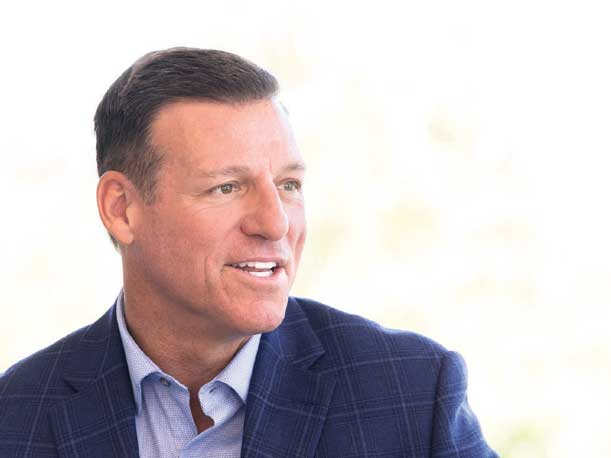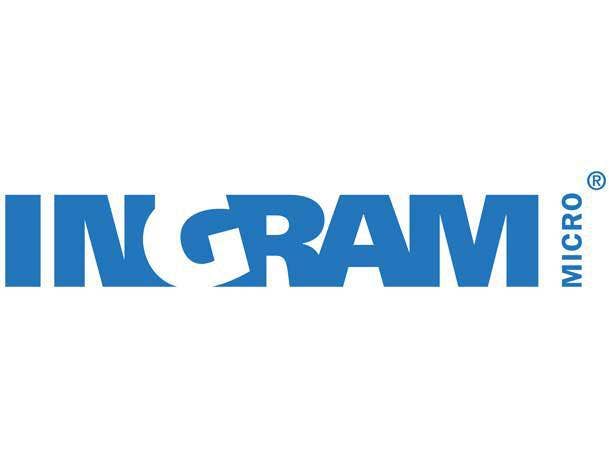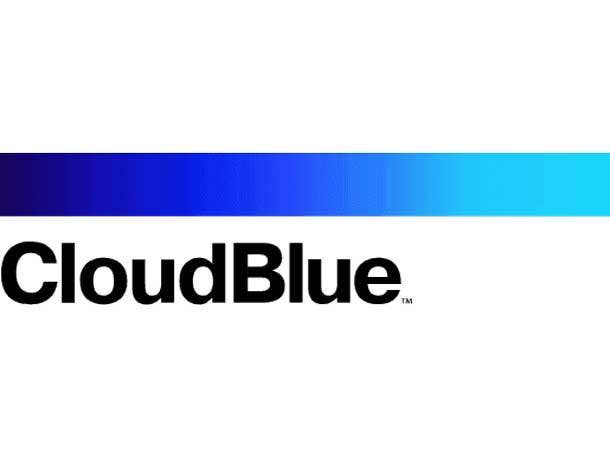Ingram Micro CEO: Bigger Focus On Cloud, Partner Skills In 2023
‘We’re still running our playbook and we’re still focused on [partners] and what we can do to help them take out complexity and continue to add skillsets. We’re making sure we’re building out skills to allow our solution providers to be more successful and integrated with their end-customers,’ says Ingram Micro CEO Paul Bay.

Building On Success
IT distribution continues to do well regardless of the ups and downs in the economy or the fortunes of individual products or services. That is no accident, said Paul Bay, CEO of Irvine, Calif.-based Ingram Micro, the IT world’s second largest distributor.
During a break between meetings with peers and vendors at last week’s Global Technology Distribution Council, or GTDC, summit in San Diego, Bay told CRN that the distribution model, and Ingram Micro’s business model, tended to smooth out any rough patches caused by such factors as changes in customer requirements, supply chain issues, or even the COVID-19 pandemic.
As a result, IT distribution helped the IT industry as a whole thrive in the face of the pandemic and potential issues as the economy faces inflation or a potential recession, Bay said.
[Related: Ingram Micro, TD Synnex, D&H CEOs On The 2023 Economic Outlook]
“In distribution, because of our size, we have a lot of variability,” he said. “So we can turn the dials up and down based on supply and demand, inflationary challenges whether it’s freight that everybody’s had to deal with or general inflation and labor rates, and whatnot. So we’re able to figure out how we automate and make sure that we’re driving efficiencies and are able to offset as best as possible any of the things we can’t control from an inflationary perspective.”
Bay also discussed some of the changes Ingram Micro itself is going through, including moves to help its channel partners build digital platforms for customers, the company’s increasing ties between its own cloud marketplace and public cloud hyperscalers, and the expansion of its support for MSPs.
There’s a lot going on at Ingram Micro and in IT distribution in general. Click through the slideshow to get more of Bay’s take on what’s happening.
One quick note: When Bay uses the term “customers,” he is referring to channel partners, which are Ingram Micro’s customers. That use of the word “customer” is pretty consistent through the IT distribution business.

Let’s get caught up with Ingram Micro. What has been going on at the company?
Well, we’re still running our playbook and we’re still focused on the customers and what we can do to help them take out complexity and continue to add skill sets. We’re making sure we’re building out skills to allow our solution providers to be more successful and integrated with their end-customers. Our Xvantage [digital experience] platform is already available in four countries. One hundred percent of our U.S. customers are on Xvantage.
What is Xvantage?
It’s our platform that we’re taking from a digital perspective. So as we’re going through a digital transformation, how do we make it much easier to do business with Ingram Micro, and taking out a lot of the complexities that we’ve been dealing with in this ecosystem for 40-plus years.
What is Ingram Micro doing in relation to its cloud marketplace?
Cloud’s been another focus area where we’ve added resources and we continue to drive additional technology capabilities. Late last month, we added enhanced features and capabilities to help partners work with Microsoft Azure and its New Commerce Experience (NCE) platform. Going back to the question of what are we doing to help our customers provide a better experience, we’re simplifying some of the challenging processes and coming out with new releases. So we continue to invest in innovation and making sure that our customers have the most seamless opportunity to be able to deliver solutions ultimately to an end user. So cloud is absolutely part of that. And cloud is just one element. If you look at as-a-service and all the pieces that are wrapped around it, we’re going to continue to focus on how can we provide an experience around the business outcome. And that’ll include cloud, infrastructure-as-a-service, security, hardware-as-a-service, and really wrapping together the complete solution and business outcomes.

How is Ingram Micro’s own cloud marketplace, based on the distributor’s CloudBlue everything-as-a-service platform, doing?
There’s no stats that we share, because we don’t publicly disclose. We’ve invested over $550 million over the lifespan of CloudBlue technology [including the original acquisition cost], which powers our cloud marketplace and other third-party marketplaces, too. That’s actually the underpinning and foundation for what we’re building for our Xvantage [partner automation system]. So we’re not just starting from scratch. We’re actually using the $550 million in investments we’ve made in CloudBlue. And CloudBlue is going to be the technology foundation for our Xvantage platform.
How does Ingram Micro’s cloud marketplace interact with the three main hyperscalers, namely AWS, Azure, and Google?
We’re deploying and able to deploy those services. The hyperscaler is one part of the solution we’re able to deliver as a route to market through CloudBlue. I think it’ll become bigger than that as part of a broader marketplace as we continue to build out our Xvantage and what we’re doing around our cloud business capabilities. But that’s just one element. We can provide all three of those hyperscalers as an opportunity, and look at how they eventually plug in to us while making sure that they’re part of that total solution. As an example, our AVID [media creation] solution is made up of six different products and services. Infrastructure-as-a-service and hyperscalers are many times a key element, but just one piece of the total solution.
What are some of Ingram Micro’s key initiatives for 2023?
We’re going to continue to focus on the customers and build out additional competencies and skill sets. You’ll see us where those opportunities are to continue to build that out. We’ll continue to focus on our partner communities on a global basis. Focusing on what we’re doing and how do we do it at scale and on a global basis.
We’ll continue to invest in digital. And again, that goes to how do we simplify very complex processes that we have in this industry and in the transactions that we have from the vendors all the way ultimately through the end user and making that as seamless as possible.

What are some of the big competencies that Ingram Micro is working on?
It could be anything. [For instance], we have done a couple of tuck-in acquisitions and acquired skill sets around cloud deployments. So if someone going from on-prem to off-prem, how do you do that deployment? There’s many things that we’re doing that historically wouldn’t be a swim lane that distribution would be in. We continue to build out those skillsets around technical competencies, too. We have over 11,000 certifications on a global basis. And we’ll continue to add those skillsets that are required for the solution providers to deliver business outcomes or managed IT professional services, and look at managing professional services.
Ingram Micro has recently moved to expand its business with managed service providers. How is its MSP business doing? How many MSPs you’re working with?
We don’t really disclose the number of MSPs. We continue to see demand from those partners, and we’re building it out on a global basis to so it’s not just a local conversation, We’re getting much better as an industry on how we deliver that on a global basis. We’re taking a product that used to be localized, and now it’s more, for lack of a better word, virtual. And it can go global much more quickly and scale much more quickly, which is a great opportunity. And it drives up productivity from an end-user perspective.

What are you seeing in terms of inflation and how that impacts Ingram Micro and distribution in general?
In distribution, because of our size, we have a lot of variability. So we can turn the dials up and down based on supply and demand, inflationary challenges whether it’s freight that everybody’s had to deal with or general inflation and labor rates, and whatnot. So we’re able to figure out how we automate and make sure that we’re driving efficiencies and are able to offset as best as possible any of the things we can’t control from an inflationary perspective. And we’re also making sure that we’re balancing the dials that we can turn because of the flexibility we have with our operating expenses. So the variability allows us to crank things up when things start going and wind it down a little bit when it’s not.
Can you give me an example of one of those ‘dials’ you can adjust?
Warehouse. We have a lot of temp labor so we can scale up very quickly based on what’s going on from a supply chain perspective, making sure that we look at the most effective way to ship products from the vendor to when it’s actually delivered, and is there a more cost-effective way to deliver, maybe not onesies or twosies, but is there some consolidation in how you’re holding products to make sure that you’re minimizing the costs associated with doing business.

What are you and Ingram Micro seeing in terms of whether we’re in a recession and potential impact?
I’m not an economist. And you can tell that the people that are the experts don’t necessarily agree either. So we’re looking at it really from what are the business outcomes that the solution providers need and where the opportunities are from an end user perspective. I think one of the key elements we need to focus on, and you’ve heard us and others talk about it, is what’s the opportunity for solution providers to find areas to free up and allow them to invest in the future. And so part of that is really understanding those end users and where those opportunities are, with those end users, to help be a better business partner. [At GTDC, you heard the University of Denver CIO] talking about, ‘Look, I’m not going to just rip out what I have today. But I need to figure out how I can free up what I’m using today more cost effective, so I can invest in the future.’
We’re really focused around what we’ve done around digital and making that experience a focus on the customer. We’re still from a cloud standpoint making investments in cloud. And then the whole circular economy with our IT asset disposition of products so that as your products are coming out, how to recycle and repurpose and reuse that technology. So we’re focusing on the growth areas. You heard [at GTDC] there is no budget for security because nobody’s going to allow security to bring a company down. Externally we’ve heard different growth rates, but we’re still seeing solid demand from a cloud perspective, and we’re still seeing in as-a-service more and more looking to go from the capex to the opex model, so how can we help facilitate that?
OK, so you’re not concerned about a potential recession?
I’m always keeping a keen eye on the economy and where we need to turn the right dials to make sure we’re as efficient and effective as possible for our partners.
What about the possibility that the U.S. may not raise the debt ceiling? What would that would mean for your business?
We haven’t done scenario planning to look what happens if the debt ceiling does or doesn’t get raised. The way we look at it is, and [IDC sees it as well], whatever GDP is going to be, historically, IT spending has been above that. People have to still drive productivity. People are still going to have to make investments in their future, but it just becomes maybe less or more concentrated. So we want to make sure that wherever GDP is, and we know technology spending historically has risen above that, how do we make sure that we’re focused on those areas of opportunity and help and be efficient.